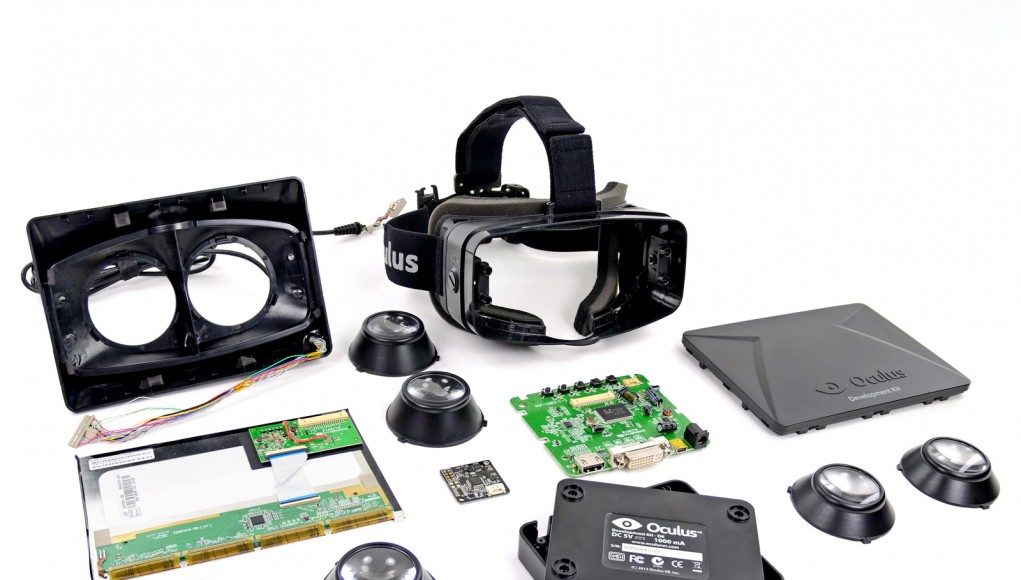
Ever wondered what the inside of the Oculus Rift dev kit actually looks like or how it scores when it comes to reparability? If you have, be sure to check out iFixit’s extensive Oculus Rift disassembly. The writers take apart the device step by step and show what kind of choices Oculus VR has made during the design of the 7-inch developer kits with the help of great, descriptive pictures. What they find bodes well for the future of the Oculus Rift mod community.
Apparently, all that’s needed to separate the different parts of the Oculus Rift dev kit is a Phillips screwdriver, a plastic opening tool, and a quarter dollar. According to the iFixit teardown, the Rift is also very easy to reassemble and can be taken apart in less than 10 minutes. Because of this accessibility, the writers give the Rift a repairability score of 9 out of 10 points.
Oculus Rift Components

IFixit also reveals what type of microcontrollers are used in the Rift – for those of you that are into technical detail, here’s a short breakdown:
- Display: Innolux HJ070IA-02D 7″ LCD, powered by a Himax HX8851 timing controller.
- Headtracker / IMU (also known as Oculus Tracker V2): Oculus VR’s custom-designed 1000 Hz tracker
- STMicroelectronics 32F103C8 ARM Cortex-M3 microcontroller with 72 MHz CPU
- Invensense MPU-6000 six-axis (gyro + accelerometer) motion tracking controller
- A chip that has printed “A983 2206” on top – iFixit suspects that “this is a three-axis magnetometer, used in conjunction with the accelerometer to correct for gyroscope drift”
- Control Box (feeds the HMD with HDMI, DVI, USB and power input): Realtek RTD2486AD display interface controller, 256 KB Winbond W25X20CL serial flash, and a Techcode TD1484A synchronous rectified step-down converter
So, if you ever should have problems with your Oculus Rift Dev Kit or want to upgrade the existing components, then it looks good that you can grab your soldering iron and tweak the device yourself – which gives hope that future consumer versions of the Rift might be just as accessible.
Oculus Rift Mod Potential
The ease of disassembly offers a great perspective for the Oculus Rift mod: since the unit is so accessible and can be taken apart within minutes, adding features like positional tracking or Ambilight-like peripheral lighting are pretty easy… in fact, these additions have already been made! Caleb Kraft of hackaday.com has used an LED strip to illuminate the peripheral vision just like Ambilight does on your TV screen, while Tony Bowren has used one of his Razer Hydra controllers to add positional tracking. The results are stunning, especially considered that we’re only in the early stages of Rift hacking.
There are even more features that could be added to the Rift relatively easily: an LED system for optical flow positional tracking via a camera (akin to what PlayStation Move and PlayStation Eye do), dual cameras in front of the Rift for a video throughput and AR applications or even fancy technologies like small-scale eye-trackers that would make foveated rendering a possibility.
The possibilities are endless and all of us at Road to VR are excited to see what other features the hacking community will come up with. Do you have an idea for a Rift feature that the hacking crows should tackle? What would you like to see as an addition to your dev kit? Leave us a comment with your ideas!







